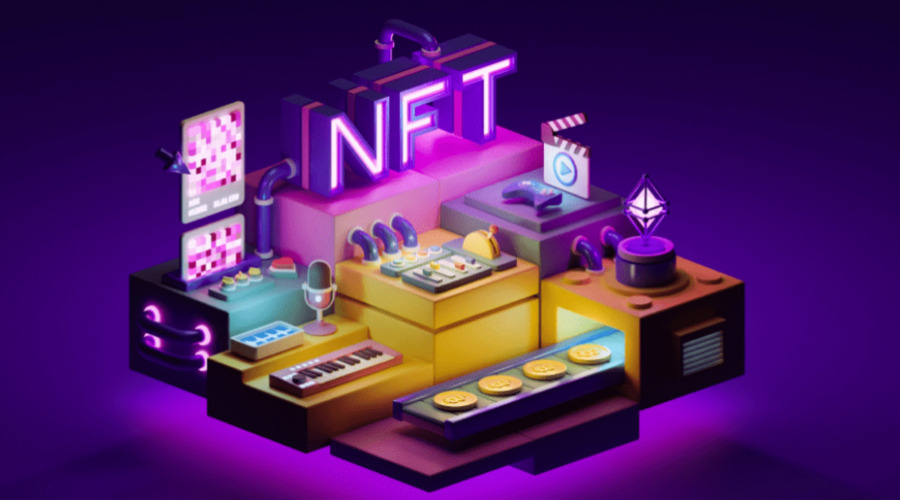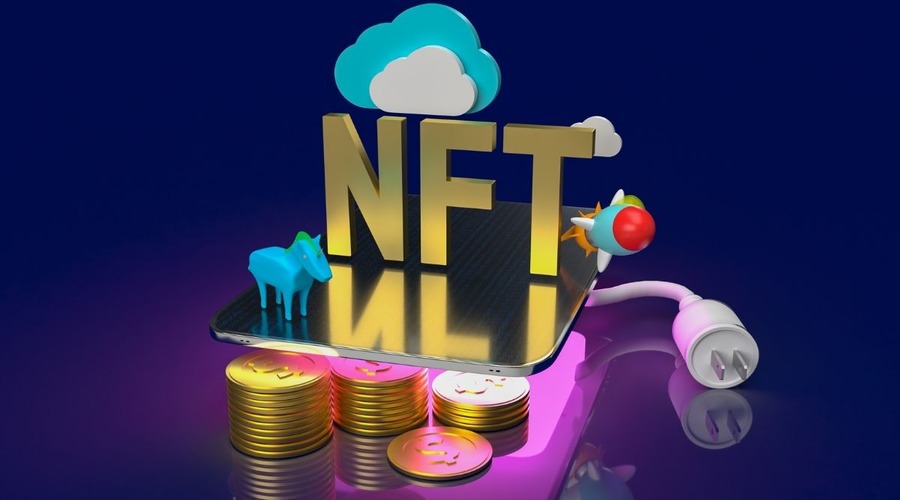The world of digital art and collectibles has been revolutionized by non-fungible tokens (NFTs), offering a new way to buy, sell, and trade unique digital assets. NFTs have gained immense popularity in recent years, with artists, creators, and collectors embracing this innovative technology. However, as with any digital platform, NFT platforms are not immune to vulnerabilities and security risks. In this article, we will delve into the vulnerabilities in NFT platforms and explore the measures that can be taken to mitigate these risks.
Introduction to NFTs
NFTs are cryptographic tokens that represent ownership or proof of authenticity of a unique digital item, whether it be artwork, music, virtual real estate, or even virtual pets. Unlike cryptocurrencies like Bitcoin or Ethereum, which are fungible and can be exchanged on a one-to-one basis, NFTs are indivisible and have unique properties that make them one-of-a-kind.
The popularity of NFTs has led to the emergence of various NFT platforms that facilitate the creation, buying, and selling of these digital assets. These platforms serve as marketplaces, connecting creators with collectors and providing a seamless experience for transacting in NFTs.
Understanding NFT Platforms
NFT platforms act as intermediaries between creators and buyers, offering a range of services to support the creation, listing, and trading of NFTs. These platforms typically leverage blockchain technology, such as Ethereum, to ensure transparency, immutability, and provenance of NFT transactions.
On these platforms, creators can mint their digital assets as NFTs, assign ownership rights, and list them for sale. Buyers, on the other hand, can browse through various collections, place bids, and purchase NFTs using cryptocurrency. NFT platforms provide a user-friendly interface, allowing users to interact with the blockchain technology underlying NFTs without needing deep technical knowledge.
Security Risks in NFT Platforms
While NFT platforms offer exciting opportunities for artists and collectors, they also face inherent security risks that need to be addressed. Understanding these vulnerabilities is crucial for both platform operators and users to ensure the safety of their investments and assets.
- Vulnerabilities in smart contracts: Smart contracts are self-executing contracts with the terms of the agreement directly written into code. They power the creation, ownership, and transfer of NFTs on blockchain networks. However, smart contracts are not infallible and can contain coding errors or be vulnerable to malicious attacks. These vulnerabilities can be exploited by attackers to compromise the integrity of the NFT platform.
- Lack of regulation and standardization: The nascent nature of the NFT industry has resulted in a lack of comprehensive regulations and industry standards. This regulatory vacuum makes NFT platforms susceptible to fraud, counterfeit NFTs, and unethical practices. Without proper oversight and guidelines, both creators and buyers can fall victim to scams and manipulative schemes.
- Phishing and scams: As the popularity of NFTs continues to rise, so does the risk of phishing attacks and scams. Malicious actors may create fake NFT platforms or impersonate legitimate ones to trick users into revealing their private keys or sending funds to fraudulent addresses. Phishing attacks can lead to financial losses and compromise the security of user accounts.
- Counterfeit NFTs: Counterfeiting is a persistent problem in the art world, and the digital realm is no exception. NFT platforms must tackle the challenge of ensuring the authenticity of the assets listed on their platforms. Without robust verification processes, counterfeit NFTs can enter the market, deceiving buyers and undermining trust in the platform.
Examples of Vulnerabilities
To understand the real-world impact of vulnerabilities in NFT platforms, let’s examine some notable examples:
- The DAO hack: In 2016, a vulnerability in the smart contract of The DAO, a decentralized autonomous organization built on the Ethereum blockchain, was exploited. The attacker drained millions of dollars’ worth of Ether by exploiting a flaw in the contract’s code. This incident showcased the potential risks associated with vulnerabilities in smart contracts and the need for thorough security audits.
- Exploits on NFT marketplaces: Numerous NFT marketplaces have fallen victim to security breaches and exploits. In some cases, hackers gained unauthorized access to user accounts or compromised the platform’s infrastructure. These incidents have resulted in the loss of valuable NFTs and funds, highlighting the urgent need for robust security measures.
- Social engineering attacks: Social engineering attacks, such as phishing, have targeted both NFT platform operators and individual users. Attackers employ deceptive tactics to trick victims into revealing sensitive information or transferring funds. These attacks exploit human psychology and trust, making them a potent threat to the security of NFT platforms.
Best Practices for Securing NFT Platforms

To mitigate the vulnerabilities and security risks associated with NFT platforms, several best practices can be implemented:
- Smart contract audits: Thorough security audits of smart contracts are crucial to identify and address vulnerabilities. Independent auditors with expertise in blockchain technology can review the code and assess potential risks, ensuring the integrity and robustness of the smart contracts powering NFT platforms.
- Two-factor authentication: Implementing two-factor authentication (2FA) adds an extra layer of security to user accounts. By requiring users to provide an additional verification code, typically sent to their mobile devices, the risk of unauthorized access to user accounts can be significantly reduced.
- Education and awareness: Raising awareness among platform users about security best practices is essential. NFT platforms should provide educational resources, tutorials, and guidelines to help users protect their accounts and assets. Promoting a culture of security and vigilance can significantly enhance the overall security posture of the platform.
- Regulating NFT platforms: As the non-fungible tokens industry continues to evolve, regulatory bodies need to step in to establish guidelines and standards. Regulation can help protect creators and buyers, ensure fair practices, and establish a framework for addressing security concerns in NFT platforms. Collaboration between industry stakeholders and regulatory authorities is crucial to strike the right balance between innovation and consumer protection.
Future of NFT Platform Security
The vulnerabilities in NFT platforms highlight the need for continuous improvement in security measures. The future of NFT platform security lies in collaborative efforts and technological innovations. Some promising areas for development include:
- Innovations in blockchain technology: Advancements in blockchain technology, such as improved consensus algorithms and enhanced privacy features, can bolster the security of NFT platforms. Newer blockchain networks with built-in security mechanisms and optimized smart contract languages may provide a more secure foundation for NFT transactions.
- Collaborative efforts to improve security: Industry collaboration and knowledge sharing can significantly enhance the security of NFT platforms. Platform operators, developers, auditors, and security experts can work together to identify and address vulnerabilities, share best practices, and establish industry-wide standards for security.
Advancements in NFT Platform Security
NFT platforms are constantly evolving to address the security challenges they face. As the industry matures, platform operators are incorporating innovative security features and practices to safeguard user assets. Some advancements in NFT platform security include:
- Enhanced identity verification: To prevent unauthorized access and protect user accounts, NFT platforms are implementing robust identity verification processes. These may include Know Your Customer (KYC) procedures, which verify the identities of users before they can engage in high-value transactions. By verifying user identities, platforms can reduce the risk of fraudulent activities and enhance the overall security of the ecosystem.
- Decentralization and interoperability: Decentralized NFT platforms are gaining traction, offering increased security through their distributed nature. These platforms leverage blockchain networks where transactions are verified by a decentralized network of nodes, making them more resistant to attacks. Additionally, the interoperability of NFT platforms allows users to seamlessly transfer assets across different platforms, reducing the reliance on a single centralized entity and enhancing security.
- Security-focused marketplaces: Specialized NFT marketplaces that prioritize security are emerging within the NFT ecosystem. These platforms conduct thorough due diligence on listed NFTs, verify the authenticity of digital assets, and provide additional layers of security for users. By curating a secure marketplace environment, these platforms aim to protect both buyers and sellers from potential risks and scams.
- Insurance for NFTs: As the value of NFTs continues to rise, the need for insurance coverage is becoming more apparent. NFT platforms are exploring partnerships with insurance providers to offer protection against loss, theft, or damage of valuable NFT assets. Insurance coverage can provide users with peace of mind and mitigate financial risks associated with investing in NFTs.
Conclusion
While NFT platforms offer exciting opportunities for creators and collectors, it’s crucial to acknowledge and address the vulnerabilities they face. By understanding the security risks, implementing best practices, and fostering collaboration, the NFT industry can work towards a more secure and trustworthy ecosystem. As NFTs continue to gain traction, prioritizing security will be paramount in ensuring the long-term success and sustainability of these platforms.
FAQs
Q1. Are NFT platforms completely secure?
No platform can claim to be completely secure, but NFT platforms can implement robust security measures to mitigate risks and vulnerabilities.
Q2. How can I protect my NFT investments?
To protect your non-fungible tokens investments, use secure platforms with strong authentication measures, verify the authenticity of NFTs before purchasing, and stay informed about the latest security best practices.
Q3. Can NFT platforms be regulated?
Regulation of NFT platforms is a subject of ongoing discussion. While some argue for regulatory oversight to protect users, others advocate for self-regulation within the industry.
Q4. What happens if I fall victim to a scam on an NFT platform?
If you become a victim of a scam on an NFT platform, report the incident to the platform operators and relevant authorities. However, the chances of recovering lost funds or NFTs may vary depending on the circumstances.
Q5. How can I contribute to the security of NFT platforms?
You can contribute to the security of NFT platforms by practicing good cybersecurity hygiene, reporting suspicious activities, and supporting initiatives that promote security and accountability in the NFT ecosystem.

